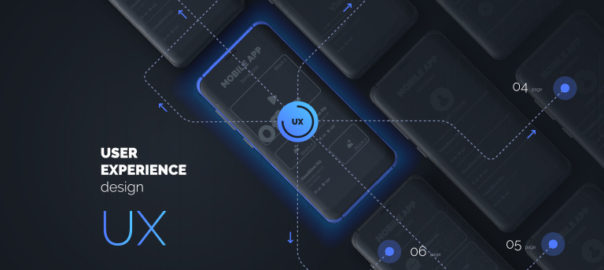The digital world has become super competitive, and it’s a real challenge for businesses to keep themselves ahead of the soaring competition. One of the key propellers of attaining success in the digital world is to offer exceptional, or if not that, at least a good user experience. Companies need to understand the context that aids in creating a smooth, frictionless user experience. Designers and developers have acknowledged the importance of becoming familiar with methods to develop frictionless user experiences.
What is Friction?
NO! We are not going to discuss the scientific definition of ‘friction’ here. In terms of design and user experience, friction is anything that prevents users from intuitively achieving their goals while they interact with a product. Friction is everything people complain about when they find technology challenging. High friction is one of the major causes of cart abandonment and high bounce rates.
Frictionless User Experience
Users don’t want to stress out themselves while browsing your website. They expect simplicity while interacting with your site. Frictionless designs are synonymous with simplicity as it ensures that everything is simplified for the users. A frictionless experience is the one wherein the user needs not to learn anything. Here, the interactions are very intuitive, and every action or operation is a natural, smooth process.
How to create a frictionless experience?
The first and the foremost step for designers and developers is to deep dive into the user interaction process. They need to understand how a user interacts with a user interface. Understanding the user journey is the key. Also, friction doesn’t need to be always harmful; it can be useful at times. They must decide when friction can be helpful, where it can be harmful, and design the product accordingly. The team can indulge in user research and testing, by creating user flows, to identify the exact places where friction might occur.
Avoiding Frictions
1. Don’t overload users with content or features
One of the most difficult tasks of user experience is to keep the users attentive and focused. With a strong focus, users can achieve their goals without taking too much effort. The problem rises when you bombard users with loads of content and features; they lose focus.
Get rid of anything unnecessary. Follow the simple yet powerful principle of minimalism, which states that less is always more. Prioritize your content and features and place them according to user expectations.
You don’t need to put everything on a single page. Prioritize your content and place it according to user expectations. Divide your content and other elements into chunks. For example – break lengthy and complicated forms into a few simple forms and simplify the form filling process.
2. Users must not be guessing anywhere, anytime
A lot of UIs lack the ability to provide apt and timely feedback from the system. If users initiate action and don’t receive acknowledgment of the same, they think that their request wasn’t delivered. Therefore, they keep trying again and again, which leads to what is known as ‘rapid clicks’.
Visual or audio feedbacks are the most effective forms of feedback. Also, the loading time of the feedbacks must be pretty quick. When users have to wait for content to load, they experience friction. When the users have to wait for a long time for the content to load, they start worrying whether the app is doing anything or it is stuck. It’s essential to provide information on how much time is required to complete the operation.
3. Keep the design clear and consistent
Clarity has a direct and positive impact on user expectations. When users are aware of what to expect, they happily interact with a product. Clearly label all the interactive elements, like buttons and all, with labels that describe their function. Avoid using jargon in labels and other places.
An inconsistency often creates confusion. When the same elements in UI look different in different parts of the app/website, it confuses your users. Maintaining a consistent design approach allows users to use their previous knowledge when interacting with a product.
Simplification of navigation is another way to impart clarity. Poor navigation adds a lot to user frustration. Users should be able to navigate from one place to another easily. The app’s navigation hierarchy, at all times, must tell the users – where they are.
4. Avoid too many steps
Too many steps might also cause unnecessary friction. Right from sign-up to individual operations, every step requires some amount of effort and thus can create friction. Get rid of all the extra steps in user flow and always keep the KISS design principle in mind when designing user flows.
Use default settings, as most users rarely change them. Also, use the data you have about your users to offer a personalized experience. Amazon and Netflix provide tailored recommendations based on previous purchases and viewing habits, which enhances the user experience.
5. Anticipate errors and handle them appropriately
An ideal app prevents the user from making errors by anticipating the errors upfront and eliminating them. Still, it’s not possible to eliminate all error situations. But, a clear help text, telling them the reason for the error as well as about how to resolve the issue, can be provided to them. When you already prepare yourself for the potential errors, you design better experiences. By validating user input and providing feedback as soon as possible, you help users to detect and fix problems.
Conclusion
If there are traces of friction during user interaction, the user experience will not be smooth and enjoyable. As a designer, you must always strive to identify all possible friction elements and get rid of all of them. Discuss more about your design needs with our team NOW!!
Interested in More About UX? You might like the difference between UX and CX. READ HERE



